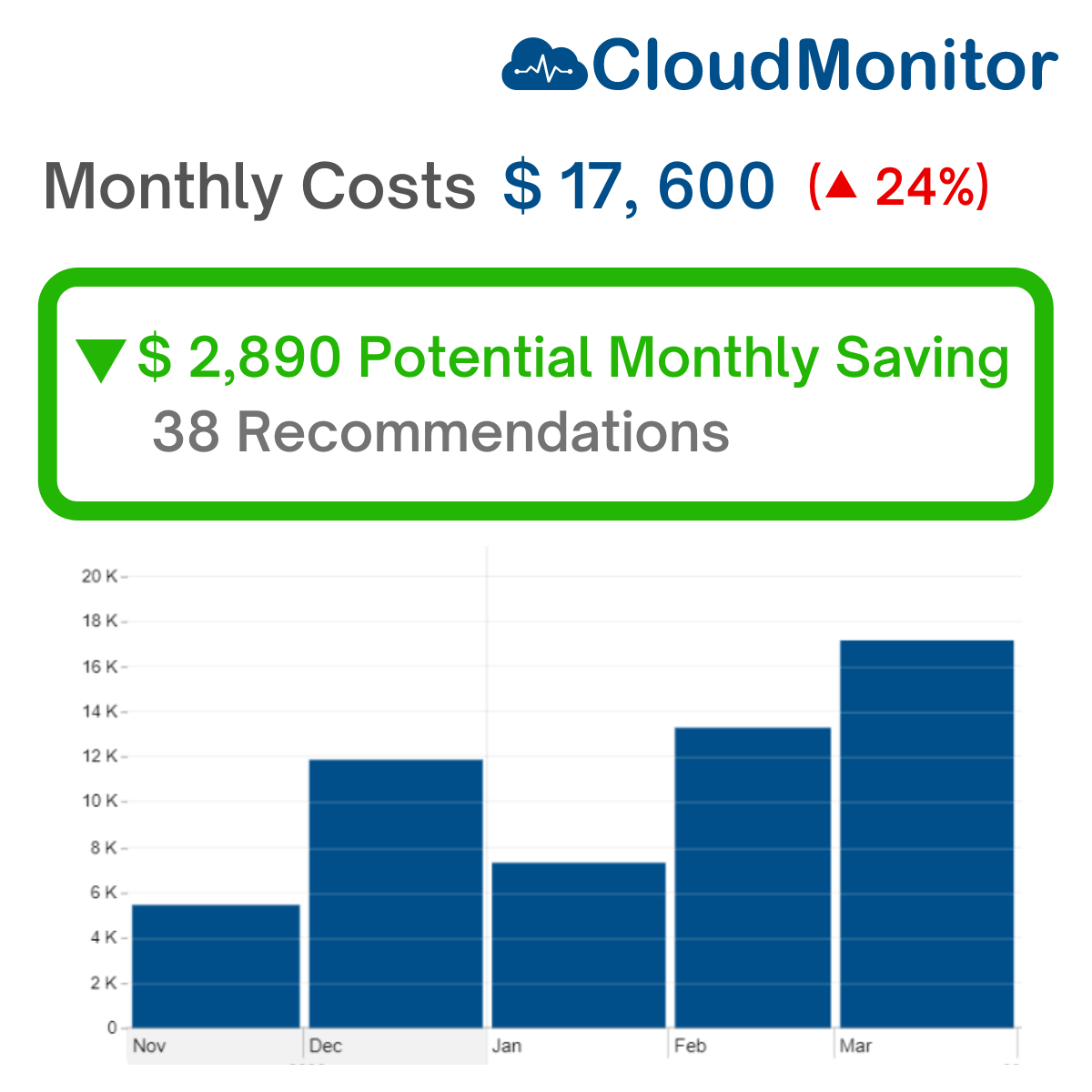Onboarding Workloads
The importance of onboarding workloads lies in creating a streamlined process for assessing the financial and technical feasibility of moving both existing and new applications to the cloud.
By implementing specific assessment criteria, organizations can determine the suitability of applications, taking into account factors such as cost-effectiveness and compatibility with the cloud environment. This Capability ensures a structured approach to assess and prioritize application onboarding, enabling organizations to make informed decisions and optimize their cloud adoption strategy.
CloudMonitor features related to Onboarding Workloads

Cost by Cost Group
By leveraging CloudMonitor’s cost allocation capabilities and utilizing its Cost Groups feature, you can gain a comprehensive view of all costs associated with a previous project. This functionality allows you to allocate costs specifically to the relevant project or application, enabling you to accurately assess the financial expectations when onboarding brownfield applications.
Current Applications
With accurate cost allocation, CloudMonitor enables you to seamlessly view all the resources utilized in existing projects and compare their costs to their respective business value, facilitating an evaluation of the feasibility of deploying a similar application or upgrading an existing one.

Onboarding Workloads Definition
Moving workloads to or between cloud environments is a complex process requiring meticulous planning, coordination, and strategic alignment among stakeholders. This involves deciding which workloads and systems will be moved, determining how they will be transitioned, and utilizing a range of capabilities for successful deployment. Onboarding workloads often arises from the need to downsize physical data centers, manage assets following mergers or acquisitions, or to optimize hosting for specific applications with unique usage patterns. This requires a concerted effort across the organization to align on the strategy, ensuring that the move supports overall business objectives and technology frameworks effectively.
A robust onboarding strategy is indispensable, especially for organizations transitioning from traditional data centers to cloud solutions. This strategy must encompass a clear understanding of the specific applications to be migrated, the conditions under which the migration will occur, and clear metrics for measuring success. Early engagement with cloud providers or specialized consultants can be invaluable in formulating a detailed migration plan that considers cost implications, architectural suitability for cloud environments, scalability, and usage variability. This plan should be crafted with input from diverse organizational roles, including engineering, finance, leadership, and product teams, ensuring a comprehensive approach that aligns with the organization’s broader cloud adoption goals.
The actual migration involves detailed planning around the timing, method, and sequence of moving systems to the cloud. This phase should consider how the migration impacts other applications, operational systems, and the cloud ecosystem at large. Issues like compliance with cloud policies, system tagging for visibility, and integration with existing cloud infrastructures are crucial. Moreover, the involvement of FinOps principles early in the process aids in optimizing costs and resource utilization effectively. As migrations can present challenges, such as financial overheads from running systems simultaneously in old and new environments, maintaining stringent onboarding KPIs and program management is vital to track progress and address potential setbacks promptly, ensuring a smooth and cost-effective transition to cloud technologies.

